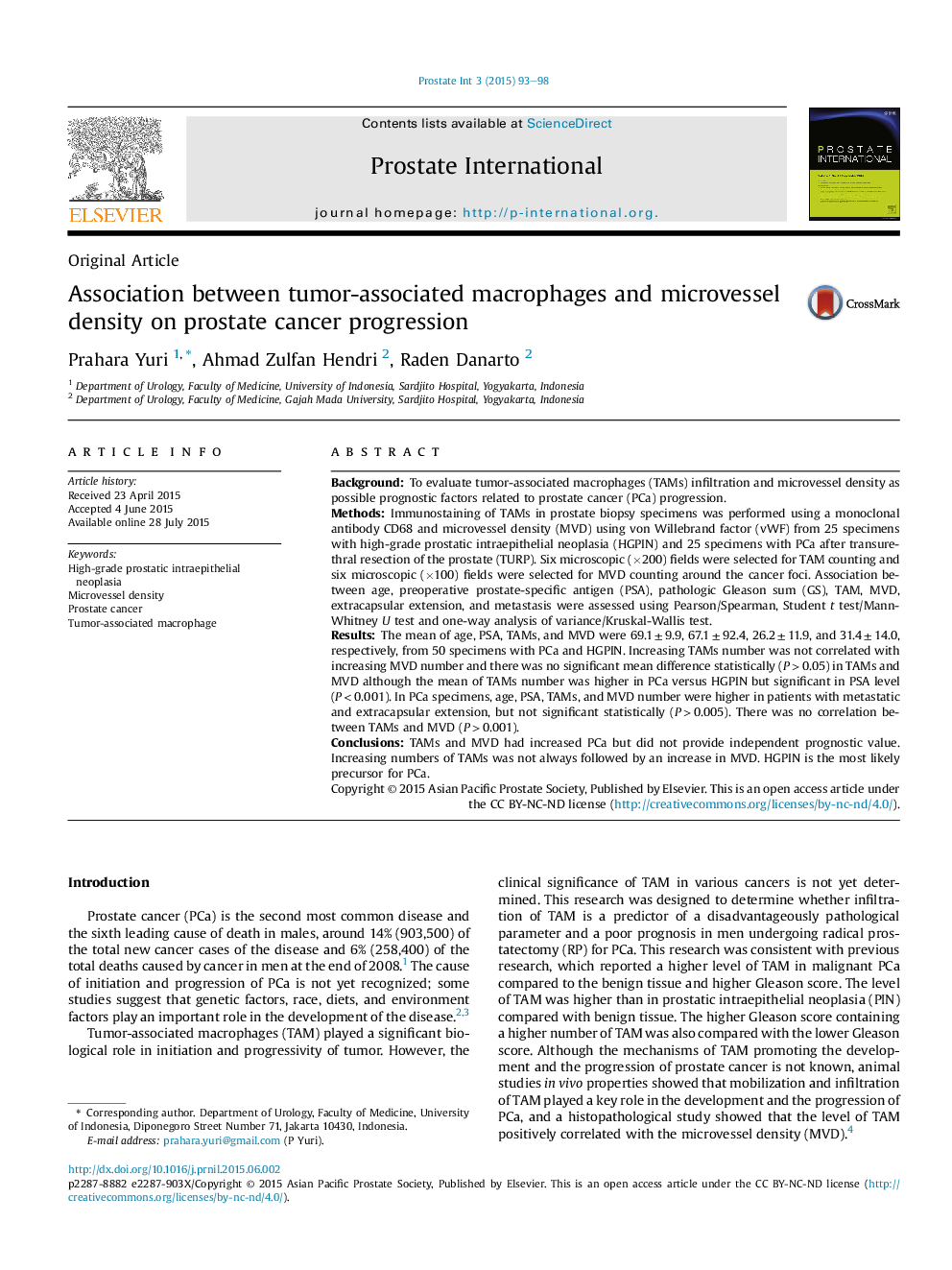| Article ID | Journal | Published Year | Pages | File Type |
|---|---|---|---|---|
| 4274128 | Prostate International | 2015 | 6 Pages |
BackgroundTo evaluate tumor-associated macrophages (TAMs) infiltration and microvessel density as possible prognostic factors related to prostate cancer (PCa) progression.MethodsImmunostaining of TAMs in prostate biopsy specimens was performed using a monoclonal antibody CD68 and microvessel density (MVD) using von Willebrand factor (vWF) from 25 specimens with high-grade prostatic intraepithelial neoplasia (HGPIN) and 25 specimens with PCa after transurethral resection of the prostate (TURP). Six microscopic (×200) fields were selected for TAM counting and six microscopic (×100) fields were selected for MVD counting around the cancer foci. Association between age, preoperative prostate-specific antigen (PSA), pathologic Gleason sum (GS), TAM, MVD, extracapsular extension, and metastasis were assessed using Pearson/Spearman, Student t test/Mann-Whitney U test and one-way analysis of variance/Kruskal-Wallis test.ResultsThe mean of age, PSA, TAMs, and MVD were 69.1 ± 9.9, 67.1 ± 92.4, 26.2 ± 11.9, and 31.4 ± 14.0, respectively, from 50 specimens with PCa and HGPIN. Increasing TAMs number was not correlated with increasing MVD number and there was no significant mean difference statistically (P > 0.05) in TAMs and MVD although the mean of TAMs number was higher in PCa versus HGPIN but significant in PSA level (P < 0.001). In PCa specimens, age, PSA, TAMs, and MVD number were higher in patients with metastatic and extracapsular extension, but not significant statistically (P > 0.005). There was no correlation between TAMs and MVD (P > 0.001).ConclusionsTAMs and MVD had increased PCa but did not provide independent prognostic value. Increasing numbers of TAMs was not always followed by an increase in MVD. HGPIN is the most likely precursor for PCa.
